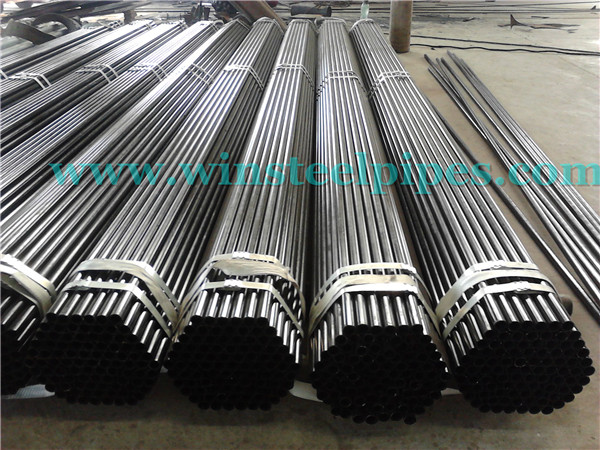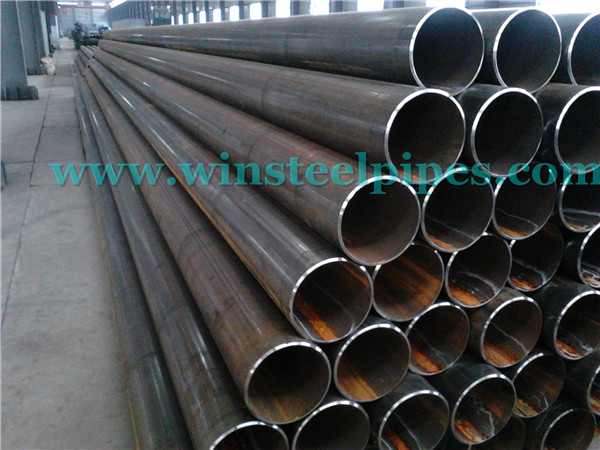Differences Between ASTM A53 and ASTM A106 Steel Pipe
We distinguish ASTM A53 and ASTM A106 steel pipe from 4 aspects below. Steel pipes according to different specification have different properties and application. And we will see the details differences between them.
1. ASTM A53 and ASTM A106 Scope
ASTM A53 specification covers the steel pipe manufacturing types in seamless and welded, material in carbon steel, black steel. Surface natural, black, and hot-dipped galvanized zinc-coated steel pipe. Diameters range from NPS 1⁄8 to NPS 26 (10.3mm to 660mm), nominal wall thickness.
ASTM A106 standard specification covers the seamless carbon steel pipe, applied for high-temperature services.
2. Different types for ASTM A53 and A106

For A53 there are ERW and seamless steel pipes Type F, E, S covers Grade A and B.
- 1. A53 Type F, furnace butt welded, continuous weld Grade A
- 2. A53 Type E, Electric resistance welded (ERW), in Grade A and Grade B.
- 3. A53 Type S, Seamless steel pipe, in Grade A and Grade B.
For ASTM A106 steel pipe, manufacturing Type only in seamless, processes hot rolled and the cold drawn. Grade in A, B, and C.
- 1. A106 Grade A: Maximum Carbon element 0.25%, Mn 0.27-0.93%. Minimum tensile strength 48000 Psi or 330 Mpa, yield strength 30000 Psi or 205 Mpa.
- 2. A106 Grade B: Maximum C below 0.30%, Mn 0.29-1.06%. Minimum tensile strength 60000 Psi or 415 Mpa, yield strength 35000 Psi or 240 Mpa.
- 3. A106 Grade C: Maximum C 0.35%, Mn 0.29-1.06%. Minimum tensile strength 70000 Psi or 485 Mpa, yield strength 40000 Psi or 275 Mpa.

3. Different Chemical and mechanical properties
A53 Grade B chemical properties content
- C≤0.30%, Mn≤1.2%, P≤0.05%, S≤0.045%, Cr≤0.40, Cu≤0.40, Ni≤0.40, Mo≤0.40, V≤0.08.
- As ASTM A106 B is the common use, the chemical here we listed is
- C≤0.3%, Mn 0.29-1.06%, P≤0.035, S≤0.035%, Si>0.1, Cr≤0.40, Cu≤0.40, Ni≤0.40, Mo≤0.40, V≤0.08.
- ASTM A53 Grade B mechanical strength is the same as the ASTM A106 B steel pipe.
- Tensile strength maximum 415 Mpa, Yield strength maximum 240 Mpa.
- Elongation: For A53 pipe there are 2 methods to calculate elongation.
- A: Use equation: e = 625 000 [1940] A^0.2/U^0.9
- B: See A53 elongation value table X4.1 or table X4.2 for different specimen area.
From below table listed the differences on chemicals for the three similar pipe:
Differently with A53 B, A106 B has Si min 0.1%, which A53 B has 0, so A106 B have better heat resistance than A53 B since Si improves the heat resistance. A106 Grade B has low sulfur and phosphorus than A53 B, this is better.
4. Applications for both standards
Both pipes applied for mechanical and pressure systems, transporting steam, water, gas, and etc.
For ASTM A53 pipe application:
- 1. Construction, underground transportation, extraction of groundwater while building, steam water transportation, etc.
- 2. Bearing sets, machinery parts processing.
- 3. Electric application: Gas transmission, water power generation fluid pipeline.
- 4. Wind power plant anti-static tube etc.
- 5. Pipelines that required zinc coated.
For ASTM A106 pipe application:
Especially for high-temperature services that up to 750°F, and it could substitute A53 pipe in most of the cases. In some country at least in United States, usually, A53 is for welded pipe while A106 is for seamless pipe. And if the client asked for ASTM A53 they will also offer A106. In China, the manufacturer will offer the pipe that complies with three standards A53 Grade B / A106 Grade B / API 5L Grade B.
Usually, LSAW pipe for exporting foreign countries, we usually manufacturing steel pipe under specification API 5L. Of course, this should be according to the customer’s requirements and the requirements which projects need.
Winsteel Group is a professional LSAW pipe manufacturer. And we have got an API 5L certificate and ISO certificates for decades years. And we have more than 15 years of export experience. If you need a quotation of our products, please contact me.